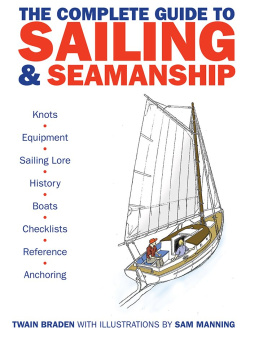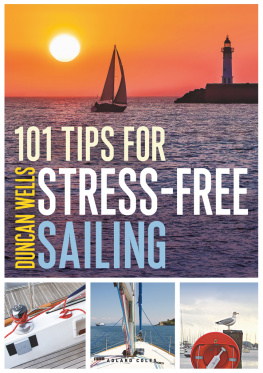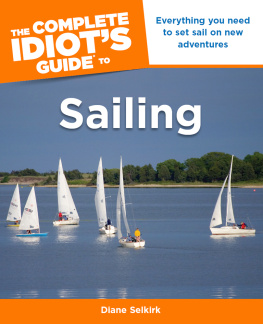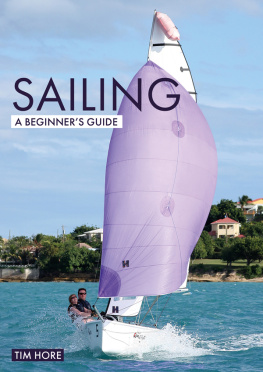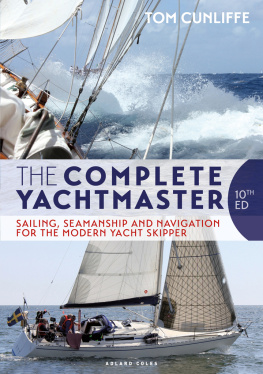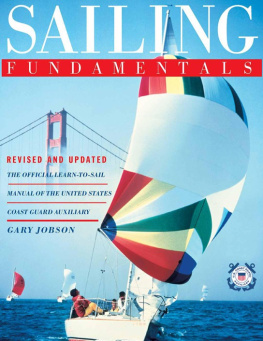
ADLARD COLES
Bloomsbury Publishing Plc
50 Bedford Square, London, WC1B 3DP, UK
This electronic edition published in 2018 by Bloomsbury Publishing Plc
BLOOMSBURY, ADLARD COLES
and the Adlard Coles logo are
trademarks of Bloomsbury Publishing Plc
First published in Great Britain 2009
This second edition published 2018
Copyright Adlard Coles Nautical, 2009, 2018
For legal purposes the constitute an extension of this copyright page
All rights reserved
You may not copy, distribute, transmit, reproduce or otherwise make available this publication (or any part of it) in any form, or by any means (including without limitation electronic, digital, optical, mechanical, photocopying, printing, recording or otherwise), without the prior written permission of the publisher. Any person who does any unauthorised act in relation to this publication may be liable to criminal prosecution and civil claims for damages.
Bloomsbury Publishing Plc does not have any control over, or responsibility for, any third-party websites referred to or in this book. All internet addresses given in this book were correct at the time of going to press. The author and publisher regret any inconvenience caused if addresses have changed or sites have ceased to exist, but can accept no responsibility for any such changes.
A catalogue record for this book is available from the British Library
ISBN: 978-1-4729-4954-7 (HB)
ISBN: 978-1-4729-4955-4 (eBook)
ISBN: 978-1-4729-4953-0 (ePDF)
To find out more about our authors and their books please visit www.bloomsbury.com where you will find extracts, author interviews and details of forthcoming events, and to be the first to hear about latest releases and special offers, sign up for our newsletter.
Contents

Welcome to sailing
Sailing is a fantastic sport that relies on two great elements wind and water both of which are natural and free! It offers great value for all those who want to enjoy the wonderfully simple sensations of being blown along by a breeze in your sails. This book arranged in the following sections aims to tell you everything you need to know about this great sport.
Starting out
How did sailing evolve from tough working boats and millionaires yachts to a sport enjoyed by millions of sailors today? Democracy and technology have taken over, providing an activity that can be enjoyed by all ages at all levels, ranging from recreational to professional. The first section of this book explains how you can learn to sail and get into the sport, and provides a guide to the similarities and differences between sailing small dinghies, larger keel boats, multihulls, or larger cruising yachts.
Learning to sail
How does the wind actually drive a boat? In the old days, it was simple: the crew of a Viking longship or square-rigger merely sailed with the wind behind them, but now we can sail in any direction except directly towards the wind. This section explains the difference between points of sailing known as beating, reaching and running, and the changes in direction known as tacks and gybes. It goes on to cover how sail power provides forward drive and how sail trim and the rudder are used to steer the boat.
Sailing manoeuvres involve changing direction, not least when you meet another boat, so a vital question is Who has right of way? Knots and ropework are also basic elements of learning to sail, as are staying warm and choosing the right gear.

Sailing is for all ages and all types of boats. Dinghies can provide a great low-cost entry to discovering all the fun of harnessing the wind.
Dinghy sailing
Dinghies and beach cats are the smallest sailing craft. They also provide the cheapest introduction to the sport and get you physically closer to wind and water. The choice of different boats is huge, so in this section we have made a selection of popular classes, explaining how they are designed and built, and how to rig them. Choosing where to sail is important, too, as is how you launch and sail away from the shore. Youll find details here about all of these, plus information on racing round a course, dinghy aftercare, and trapeze and spinnaker technique for high-performance sailing.
Cruiser sailing
A cruiser or yacht provides the opportunity to live afloat. Its a wonderful lifestyle, whether youre sailing in sunshine or snuggled up somewhere in the comfort of the cabin down below. This section explains the principal elements of a cruiser, how to rig and reef the sails, how to sail in all directions, how to use the engine should the wind fail, how to leave or enter a dock or marina, how to deal with wind and tide, and how to choose an anchorage or pick up a mooring. It also explains what to do in rough weather or fog.
Remember that youll want to go ashore, so youll need a tender also covered in this section.
Navigation and weather
You need to know where youre going and how to get there. Navigation was once a difficult subject, but has become much more accessible due to the availability of GPS. The classic style of navigation, however, is still important everyone who sails a yacht should know how to read a chart, plot a course and calculate the movement of tides. Weather plays a major role in sailing, and though we have never been more blessed by reliable forecasts, understanding weather systems and their effect on your sailing will be an invaluable help.
Maintenance
Many dinghies are virtually maintenance free: just hose off the salt and put them away. By contrast, yachts require annual maintenance to ensure that everything works perfectly the following season. This section explains how to look after every element of the yacht including the hull and deck, sails, engine, electrics, plumbing and safety equipment.
Safety at sea
Finally, you need to sail safely. To do this, you must plan ahead, use the right equipment, avoid collisions, learn how to read signals, and acquire a basic knowledge of first aid and emergency repairs.
We hope you enjoy this book and that it leads to many years of sailing pleasure. It truly is a fabulous sport.

Where do we go next? Navigation is all part of the fun and challenge of sailing, and it has been made simpler and more effective thanks to modern technology.

Yacht racing is fantastic for team building. This Finnish-built Swan is recognised as one of the great models.
Starting Out

Sailing for everyone



